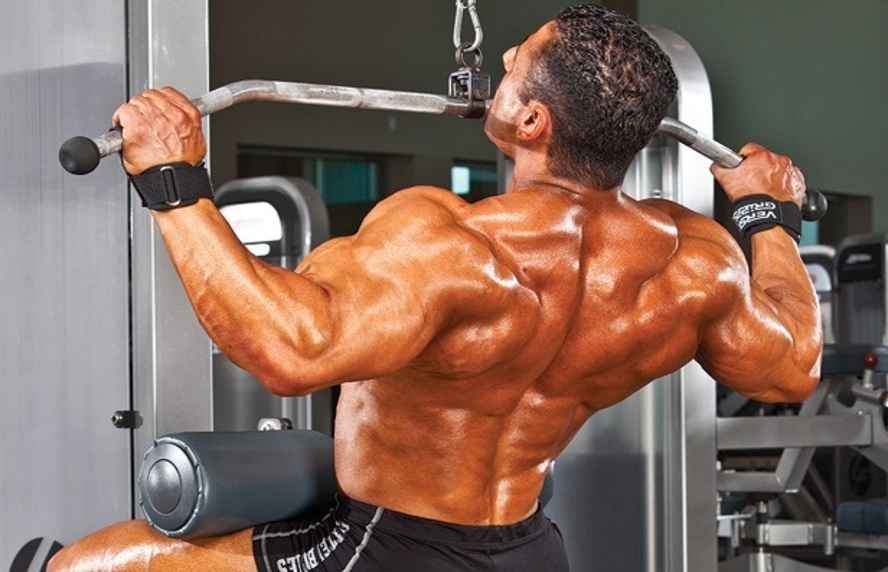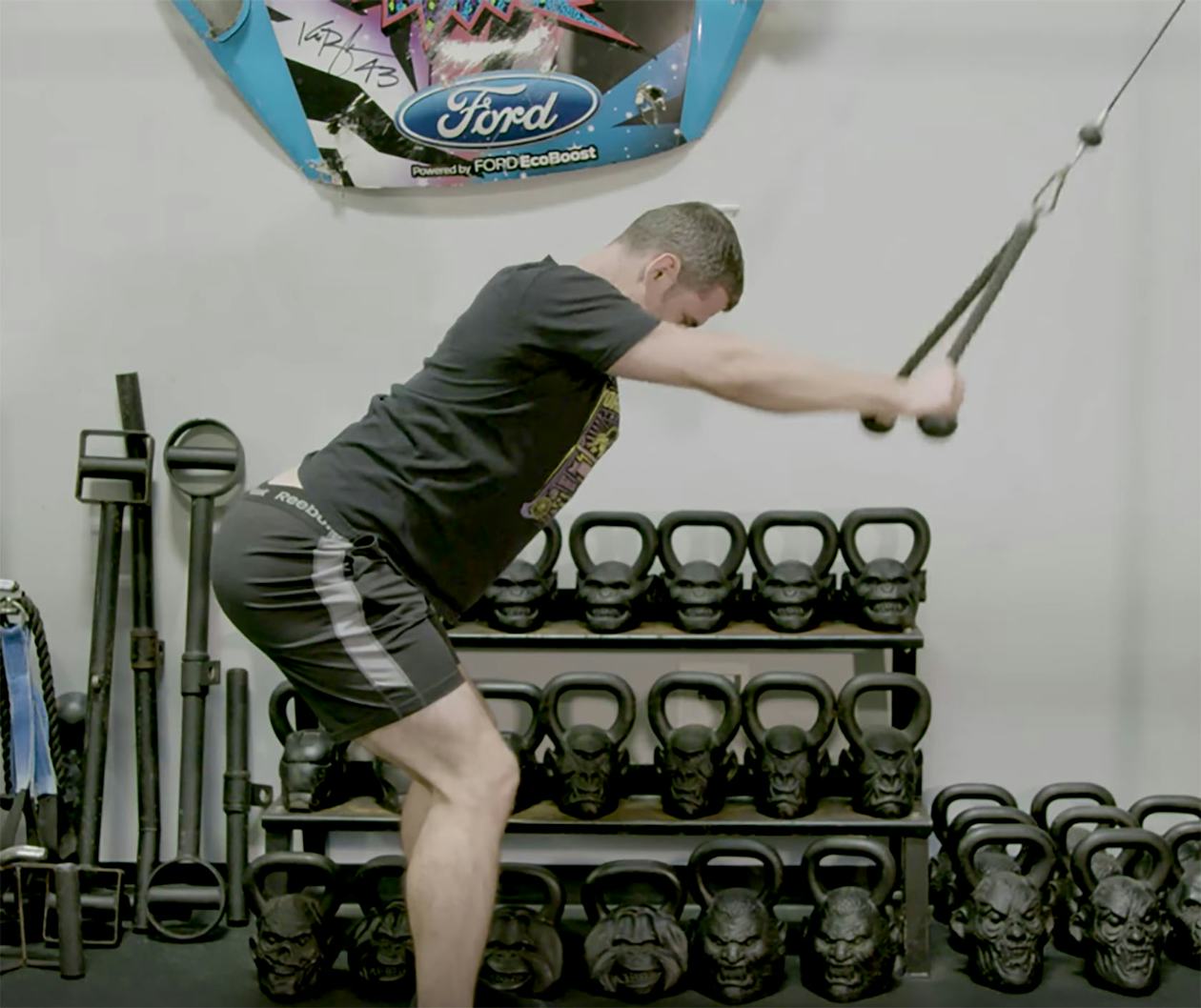Cbum aka Chris Bumstead is a world-famous Body Builder, He has been Mr. Olympia for the past consecutive four years winning the show in 2019, 2020, 2021, and 2022. He has more than 13.5 million followers on Instagram. His last bench press record is 405 lbs. He has 2.69 million subscribers on Youtube.
Table of Contents
Chris Bum Current Bio and Stats
- Age: 27
- Height: 6’1” (185cm)
- Weight: 235-264lbs (106-120kg)
- Date of Birth: February 2, 1995
- Occupation: Professional bodybuilder
- Career: Bodybuilder, business owner
- Notable Achievements:
- Runner up, Mr. Olympia Classic Physique 2017-2018
- Winner, 4x Mr. Olympia Classic Physique 2019-2022
Chris Bum Back Workout Routine
He trains his back on Tuesday. If you can conquer his back workout routine then your back last longer than your previous back pump. You can follow his youtube channel for detailed workout videos. His back workout is full of heavy weights and too extensive.
The following workouts are based on Cbum’s most recent sessions, with plenty more examples being available on his YouTube channel.
- Deadlifts (4 sets, 10, 8, 8, to failure)
- Bent-Over Rows (4 sets, 12, 10, 10, 8 reps)
- Wide Grip Lat Pulldowns or Wide Grip Assisted Pullups (4 sets, 12-15 reps)
- Straight Arm Pulldowns (4 sets, 12-15 reps)
- Dumbbell Rows (4 sets, 15, 12, 10, 10 reps)
- Machine Rows (3 sets, 20 reps)
- Hyper Extensions (2 sets, to failure)
That’s all you need to do, to follow Chris Bum Back Workout Routine. He follows a strict diet and takes his supplements.
Deadlifts (4 sets, 10, 8, 8, to failure)
The deadlift is a strength training exercise that targets multiple muscle groups, including the back, legs, and glutes. It’s performed by lifting a barbell or weight from the ground to a standing position, then lowering it back down to the ground.
Here are the steps to perform a traditional barbell deadlift:
- Stand with your feet shoulder-width apart and your toes pointing straight ahead.
- Bend your knees and grab the barbell with a grip that’s slightly wider than shoulder-width.
- Keep your back straight and engage your core.
- Slowly lift the bar off the ground, straightening your legs and keeping the bar close to your body.
- Stand up straight with the bar at hip level, making sure to keep your back straight and avoid rounding your lower back.
- Slowly lower the bar back down to the ground, keeping control of the weight and maintaining proper form.
It’s important to use proper form when performing deadlifts to avoid injury. Make sure to engage your core, keep your back straight, and avoid rounding your lower back. You may also want to start with lighter weights and gradually increase the weight as you get stronger and more comfortable with the exercise.
Bent-Over Rows (4 sets, 12, 10, 10, 8 reps)
The bent-over row is a weight-training exercise that targets the back muscles, specifically the lats, traps, and rhomboids. It can be performed with a barbell, dumbbells, or a cable machine.
Here are the steps to perform a dumbbell bent-over row:
- Stand with your feet hip-width apart and your knees slightly bent.
- Bend forward at the hips until your torso is nearly parallel to the floor, with your arms hanging straight down and holding a dumbbell in each hand.
- Keep your back straight and engage your core to maintain balance.
- Slowly lift the dumbbells towards your sides, keeping your elbows close to your body.
- Squeeze your back muscles at the top of the movement, then lower the weights back to the starting position.
It’s important to maintain proper form when performing bent-over rows to avoid injury. Make sure to keep your back straight and engage your core to maintain balance, and avoid rounding your lower back. Start with lighter weights and gradually increase the weight as you get stronger and more comfortable with the exercise.
Wide Grip Lat Pulldowns (4 sets, 12-15 reps)
The wide grip lat pulldown is a weight training exercise that targets the latissimus dorsi muscles, commonly referred to as the “lats.” This exercise can be performed on a cable machine.
Here are the steps to perform a wide grip lat pulldown:
- Adjust the cable machine to the desired height and attach a wide grip bar to the cable.
- Sit down on the bench, facing the machine and grasp the bar with a wide, overhand grip.
- Engage your core and sit up straight, keeping your chest up and out.
- Pull the bar down towards your chest, keeping your elbows pointing downwards.
- Pause briefly at the bottom of the movement, then slowly return the bar to the starting position.

It’s important to use proper form when performing wide-grip lat pulldowns to avoid injury. Make sure to keep your chest up and out, engage your core, and avoid using momentum to lift the weight. Start with lighter weights and gradually increase the weight as you get stronger and more comfortable with the exercise.
Straight Arm Pulldowns (4 sets, 12-15 reps)
The straight arm pulldown is a weight training exercise that targets the latissimus dorsi muscles, commonly referred to as the “lats,” as well as the triceps and shoulders. This exercise can be performed on a cable machine.
Here are the steps to perform a straight arm pulldown:
- Adjust the cable machine to the desired height and attach a straight bar to the cable.
- Stand facing the machine, keeping your feet hip-width apart.
- Grasp the bar with a shoulder-width, overhand grip.
- Engage your core and keep your arms straight, lifting the bar up above your head.
- Pull the bar down towards your hips, keeping your arms straight and engaging your back muscles.
- Pause briefly at the bottom of the movement, then slowly return the bar to the starting position.

It’s important to use proper form when performing straight-arm pulldowns to avoid injury. Make sure to engage your core and avoid swinging the weight or using momentum to lift the bar. Start with lighter weights and gradually increase the weight as you get stronger and more comfortable with the exercise.
Dumbbell Rows (4 sets, 15, 12, 10, 10 reps)
The dumbbell row, also known as the bent-over dumbbell row, is a weight training exercise that targets the back muscles, including the lats, rhomboids, and traps.
Here are the steps to perform a dumbbell row:
- Stand with your feet hip-width apart and your knees slightly bent.
- Bend forward at the hips until your torso is nearly parallel to the floor, with a dumbbell in one hand and the other hand resting on a bench or other stable surface for support.
- Keep your back straight and engage your core to maintain balance.
- Slowly lift the dumbbell towards your hip, keeping your elbow close to your body.
- Squeeze your back muscles at the top of the movement, then lower the weight back to the starting position.
- Repeat the exercise with the other arm.
It’s important to use proper form when performing dumbbell rows to avoid injury. Make sure to keep your back straight and engage your core to maintain balance, and avoid rounding your lower back. Start with lighter weights and gradually increase the weight as you get stronger and more comfortable with the exercise.
Machine Rows (3 sets, 20 reps)
Machine rows, also known as cable rows or seated rows, are a weight training exercise that targets the back muscles, including the lats, rhomboids, and traps. Machine rows can be performed on a variety of machines, including cable rows, plate-loaded rows, and hammer-strength machines.
Here are the steps to perform a machine row:
- Adjust the machine to the appropriate weight and seat height.
- Sit down on the bench and grasp the handles, keeping your feet flat on the floor.
- Engage your core and sit up straight, keeping your chest up and out.
- Pull the handles towards your chest, keeping your elbows close to your body.
- Squeeze your back muscles at the top of the movement, then slowly return the handles to the starting position.

It’s important to use proper form when performing machine rows to avoid injury. Make sure to engage your core and keep your chest up and out, and avoid using momentum to lift the weight. Start with lighter weights and gradually increase the weight as you get stronger and more comfortable with the exercise.
Hyper Extensions (2 sets, to failure)
The hyperextension exercise, also known as the back extension, is a weight-training exercise that targets the muscles of the lower back, including the erector spinae, glutes, and hamstrings.
Here are the steps to perform a hyperextension:
- Position yourself face down on a hyperextension bench with your hips anchored at the top of the bench and your feet secured under the foot pads.
- Cross your arms over your chest and engage your core.
- Slowly raise your upper body up and away from the bench until you feel a stretch in your lower back.
- Hold the position briefly, then slowly lower your body back down to the starting position.

It’s important to use proper form when performing hyperextensions to avoid injury. Make sure to engage your core and avoid overextending your back, and avoid using momentum to lift your body. Start with lighter weights and gradually increase the weight as you get stronger and more comfortable with the exercise.
So this is all about the Back Workout of CBum, you can follow him on Instagram as well as on YouTube.
WHO IS CHRIS BUMSTEAD?
Chris Bumstead, age 27, was born and raised in Ottawa, Ontario, Canada. At six feet tall, he has a contest weight of 225 pounds. In the offseason, he typically gets up to 260 to 265 pounds.
Chris Bumstead is the first Mr. Olympia who could just as easily be classified as a fitness influencer. He documents his training and nutrition on his YouTube and Instagram accounts, like this shoulder workout, giving a behind-the-scenes look at what it takes to be a champion.
In addition to competing, he is part owner of a supplement company called Raw Nutrition.
I hope our breakdown of Chris Bumstead’s workout routine helps you find a new training split that works for you.



